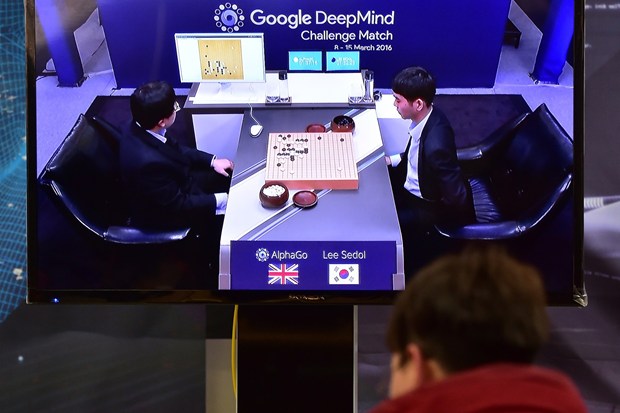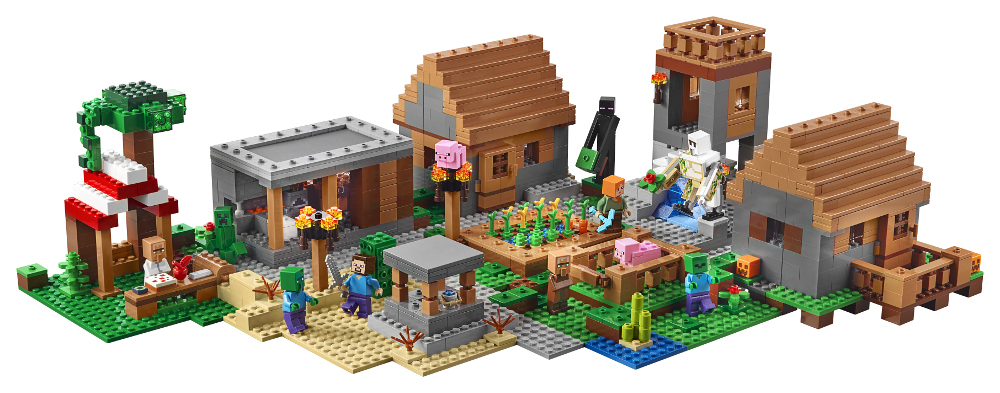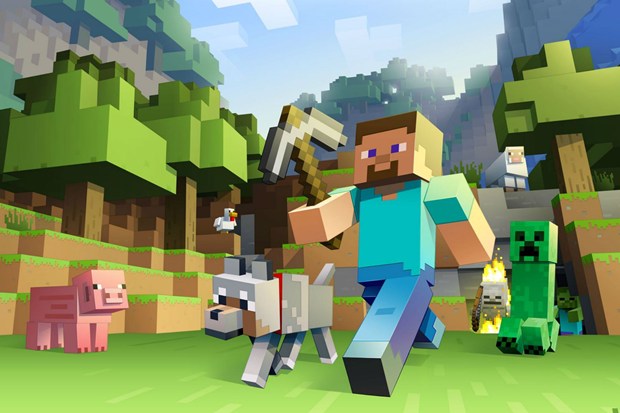
by Stone Marshall | Apr 19, 2016 | Awesome Book News |
Joe and Anthony Russo’s Captain America: Civil War is overflowing with characters seen in previous Marvel Studios films, but two of the biggest highlights of the movie are the heroes being newly introduced: Chadwick Boseman’s Black Panther and Tom Holland’s Spider-Man. What’s interesting about these two heroes is that the blockbuster doesn’t craft big origin stories for them, instead showing them deep into their respective heroes’ journeys… but this wasn’t always the case. In fact, it was the web-slinger moving in and out of the script that eventually convinced the writers to just have Black Panther exist in the MCU instead of showing how Prince T’Challa wound up wearing his special Vibranium costume.
Last weekend, I had the pleasure of sitting down with screenwriters Christopher Markus and Stephen McFeely during the Captain America: Civil War press day in Los Angeles, and it was during our conversation that they revealed how the characterization of Black Panther in the movie was affected by Spider-Man. As it turns out, the writers were toying around with putting the wall-crawler in the film long before Marvel finalized their deal with Sony Pictures for the character, and it was in preparation for things going south that they started playing with T’Challa’s place in the story and how far along he would be into the costumed hero game. Markus explained,
Originally, T’Challa and T’Chaka were just the representatives of Wakanda, sort of the voice of other countries in the world going, ‘You people are out of control,’ and then to be aggrieved by possible Bucky actions. Frankly, just not have him be Black Panther yet. He’s getting his own movie, you know. He’s the prince of a country! That’s pretty good for a movie. Maybe we get to play with Spider-Man and all that. When things maybe looked like we weren’t going to get Spider-Man, it was like, ‘Let’s put the costume on that guy!’ And then he became so integral to the story as it evolved that once Spider-Man came back, we didn’t take him out. So, it was a problem that created a really nice situation.
Having seen Captain America: Civil War (and not wanting to give anything too big away), I can tell you that the integration of Black Panther winds up being seamless. Admittedly they do change some very minor details from the comics, but the immediate introduction to the superhero character works perfectly in the context of the film, and the secrecy of Wakanda as a nation provides a totally reasonable explanation as to why we’re only now hearing about him now, in the 13th film of theMarvel Cinematic Universe.
Later this year we will see the release of Doctor Strange, which will tell the origin story of the titular Master of the Mystic Arts, but Captain America: Civil War definitely suggests that comic book movies could eventually move forward and leave this kind of set-up storytelling behind – trusting audience’s to grasp who a character is without two hours of exposition and backstory. Beyond 2016, it’s possible that we’ll also see an origin established for Captain Marvel when her movie comes out in 2018, but James Gunn’s Guardians of the Galaxy Vol. 2, Jon Watts’ Spider-Man: Homecoming, Taika Waititi’s Thor: Ragnarok, Ryan Coogler’s Black Panther, Peyton Reed’s Ant-Man And The Wasp, and the Russo brothers’ two-part Infinity War will all be beyond that first step.
Captain America: Civil War will be in theaters on May 6th.
How Spider-Man Totally Changed Black Panther’s Role In Captain America: Civil War

by Stone Marshall | Apr 18, 2016 | Minecraft News |
The artificial intelligence created by Google and London-based DeepMind has taken a two-game lead in a landmark championship against the one of the world’s best players at the ancient board game of Go.
The AlphaGo AI defeated South Korean grandmaster Lee Sedol in another tense game, at the Korea Baduk Association in Seoul on Thursday.
The match was another tight encounter, which entered overtime before AlphaGo eventually triumphed. “AlphaGo played some beautiful creative moves in this game,” said Demis Hassabis, Deepmind founder, on Twitter. He added that 100 million people had watched the first match online, including 60 million in China.
The victory puts Deepmind on the verge of a remarkable triumph, which some experts have suggested is a decade or more ahead of schedule in the development of true, ‘thinking’ AI.
The two sides will play three more times over the next week, with the winner taking a $1 million prize. Lee will have to win every remaining match to take home the prize.
Deepmind had already defeated the European champion of Go, the company said in an announcement made in the journal Nature in January. Google purchased Deepmind for an estimated £400 million in July 2014.
The territorial 3,000-year-old game is regarded as one of the most complex that a computer could be asked to tackle, having simple rules that extrapolate out into virtually endless, intricate scenarios. Unlike chess, which can be theoretically masted by memorising an admittedly vast number of moves and scenarios, Go requires human-like intuition, thinking and forward planning to be successful.
AlphaGo combines advanced search techniques with neural networking, allowing it to both think creatively and take advantage of huge amounts of data about previously played games of Go. Using 12 ‘layers’ of AI, it selects its next move using just one element of its system while the others predict how the rest of the game will play out. Predicting the future in this way, it adjusts its strategy and moves gradually towards victory.
The development of AlphaGo is regarded as an early step towards a true artificial intelligence, which could have an incalculable impact on human lives, economics and technology.
Deepmind AI beats human champion again

by Stone Marshall | Apr 18, 2016 | Awesome Book News, Minecraft News |
From the start, the enemy aliens are making kills — three times they destroy the defending laser cannon within seconds. Half an hour in, and the hesitant player starts to feel the game’s rhythm, learning when to fire back or hide. Finally, after playing ceaselessly for an entire night, the player is not wasting a single bullet, casually shooting the high-score floating mothership in between demolishing each alien. No one in the world can play a better game at this moment.
This player, it should be mentioned, is not human, but an algorithm on a graphics processing unit programmed by a company called DeepMind. Instructed simply to maximise the score and fed only the data stream of 30,000 pixels per frame, the algorithm — known as a deep Q-network – is then given a new challenge: an unfamiliar Pong-like game called Breakout, in which it needs to hit a ball through a rainbow-coloured brick wall. “After 30 minutes and 100 games, it’s pretty terrible, but it’s learning that it should move the bat towards the ball,” explains DeepMind’s cofounder and chief executive, a 38-year-old artificial-intelligence researcher named Demis Hassabis. “Here it is after an hour, quantitatively better but still not brilliant. But two hours in, it’s more or less mastered the game, even when the ball’s very fast. After four hours, it came up with an optimal strategy — to dig a tunnel round the side of the wall, and send the ball round the back in a superhuman accurate way. The designers of the system didn’t know that strategy.”
In February, Hassabis and colleagues including Volodymyr Mnih, Koray Kavukcuoglu and David Silver published a Nature paper on the work. They showed that their artificial agent had learned to play 49 Atari 2600 video games when given only minimal background information. The deep Q-network had mastered everything from a martial-arts game to boxing and 3D car-racing games, often outscoring a professional (human) games tester. “This is just games, but it could be stockmarket data,” Hassabis says. “DeepMind has been combining two promising areas of research — a deep neural network and a reinforcement-learning algorithm – in a really fundamental way. We’re interested in algorithms that can use their learning from one domain and apply that knowledge to a new domain.”
DeepMind has not, admittedly, launched any products — nor found a way to turn its machine gameplay into a revenue stream. Still, such details didn’t stop Google buying the London company — backed by investors such as Elon Musk, Peter Thiel and Li Ka-shing — last January in its biggest European acquisition. It paid £400 million.
DeepMind: inside Google’s super-brain

by Stone Marshall | Apr 17, 2016 | Minecraft News |
Having revealed the large Lego Minecraft Fortress at New York toy Fair, today Lego added a surprise Minecraft set to its line-up – Lego Minecraft The Village (21128).
Not shown at Toy Fair and coming in June, The Village expands Lego’s Minecraft world considerably. It’s a large set featuring 1600 pieces and includes rain forest, snow and desert biomes as well as a watchtower, library, blacksmith, butcher and marketplace.
It also comes with an array of different Minecraft mini-figures. These include Steve, Alex, zombie and zombie villager, plus a Creeper, enderman, pig, baby pig, iron golem and 2 villagers (a farmer and a librarian).
Once built it is an impressive 5” (15cm) high, 19” (49cm) wide and 17” (44cm) deep. This will combine with other Minecraft Lego sets to offer a complete Minecraft world. Other nice touches are the fold out library and butcher’s buildings as well as the flip open forge.

Lego Minecraft – The Village
Some may balk at the need to recreate Minecraft in Lego form as it is already Lego in virtual form. But although at first the physical Minecraft bricks feel a little restrictive, being able to combine this with a larger Lego collection opens up new ways for children to play.
Most telling is the attention to detail. Accessory elements include a crafting table, water bucket, emerald-ore-style elements, 2 pumpkin heads and a chest with emerald-style elements. These alone are enough to win over young Minecraft fans.
Adding this to other popular Lego kits coming this year (Lego DC and Marvel Superheroes, Lego Ninjago, Lego Nexo Knights and Series 9 Mixels) and it looks like another strong showing from the Billund based brick masters in 2016.
Lego Minecraft The Village set 21128 will be available from 1st June for $199.99.
Andy Robertson is a freelance technology and gaming expert for a range of national media. He produces the daily Family Gamer TV show on YouTube.
‘Lego’ Reveals Huge 1600 Piece ‘Minecraft’ Set

by Stone Marshall | Apr 17, 2016 | Minecraft News |
The sandbox world of Minecraft allows you build practically anything. Soon though, it won’t be used simply to create spatial objects, but artificial intelligence systems. At least, that’s Microsoft’s plan, taking an project aiming to teach AI to make its own decisions and launching it as an open-source testbed.
Currently, Microsoft’s internal study sees a small team of computer scientists trying to teach a virtual player how to navigate Mojang’s blocky world. The AI has only the same available resources a flesh and blood player would have access to, and must learn from its mistakes.
The game is a surprisingly good starting point to help learning AIs develop. After all, Minecraft drops human players into a randomly generated world and abandons them with no instructions, leaving them to intuit their surroundings and start creating. Putting a virtual mind into the same scenario and trying to get it to figure things out theoretically works on the same principles as human development.
The Minecraft ‘agent’ begins with zero knowledge, and no set objective. Through trial and error, such as walking into environmental hazards, it begins to build an objective and work towards it — in the case of Microsoft’s study taking place in New York, reaching the highest point in the world. The AI begins to understand its role and progress via incremental rewards, while eliminating data that’s irrelevant to its goal, such as time of day.
“We’re trying to program it to learn, as opposed to programming it to accomplish specific tasks,” said Fernando Diaz, senior researcher on the project. “[Minecraft is] a digital playpen for artificial intelligence. It’s an environment in which we can develop an algorithm for teaching a young artificial intelligence to learn different concepts in the world.”
The test is a part of the wider Project AIX, developed by Katja Hofman, a researcher working at Microsoft’s Cambridge labs. Frustrated by the simplicity of other games used to develop AI, she wanted something more focused on adaptive learning.
“Minecraft is the perfect platform for this kind of research because it’s this very open world,” Hofmann said. “You can do survival mode, you can do ‘build battles’ with your friends, you can do courses, you can implement our own games. This is really exciting for artificial intelligence because it allows us to create games that stretch beyond current abilities.”
The ultimate ambition is to make artificial intelligence more like general intelligence — that is, how we humans can combine our ‘programming’ in different skills to achieve desirable results. Most AI development to date has focused on getting machines to do one task really well, whereas the freedom of Minecraft allows AIX to take a more exploratory approach.
“The things that seem really easy for us are actually the things that are really difficult for an artificial intelligence,” said Robert Schapire, one of the scientists currently working on the project.
AIX itself is currently available to academic researchers, but Microsoft will be making it widely available this summer. It consists of a mod for the Java version of Minecraft, and a piece of code that helps AI agents sense and act within the environment, growing in experience as it processes feedback from its own actions.
However, it’s not seen as a consumer project, but rather a way to attract a broad range of researchers to experiment with AI development. It will be compatible with Windows, Linux and Mac OS, and more confident users can program their agents in “any programming language they are comfortable with”.
AI tests mean Minecraft will soon be able to play itself





